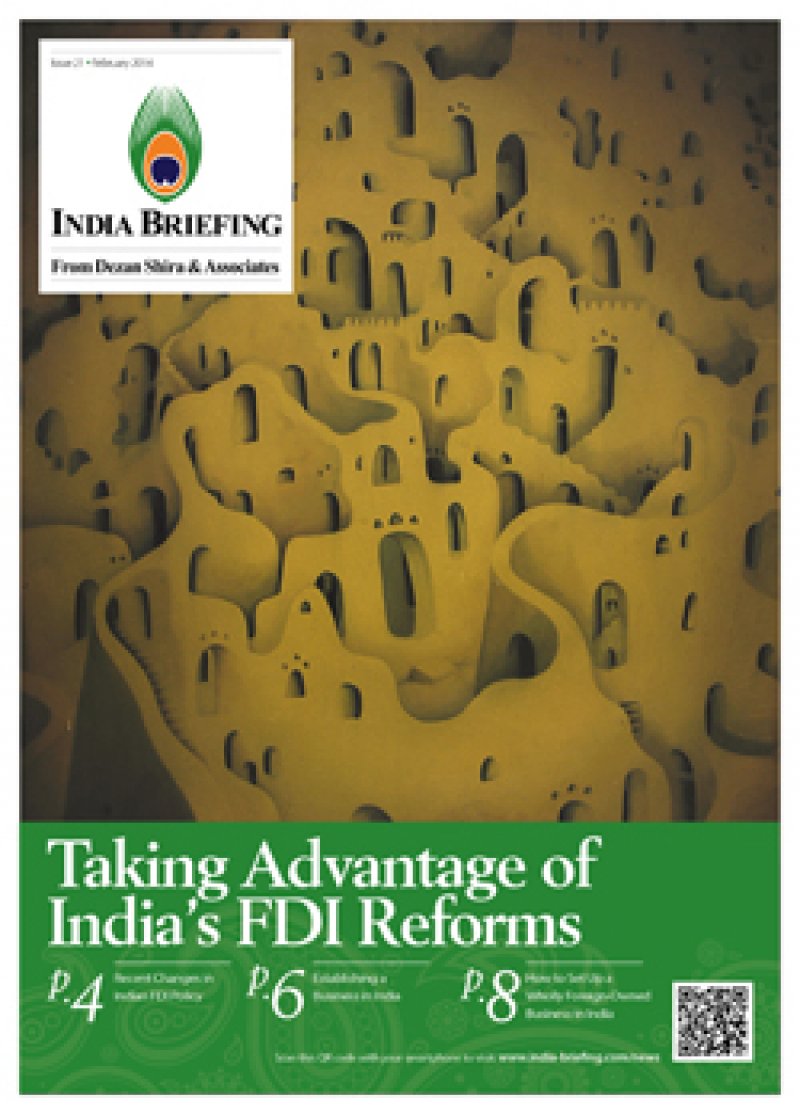
Taking Advantage of India's FDI Reforms
Published: February 2014In India Briefing Magazine’s first issue of 2014, we explore important amendments to India’s foreign investment policy and outline various options for business establishment, including the creation of wholly owned subsidiaries in sectors that permit 100 percent foreign direct investment. We additionally explore several taxes that apply to wholly owned subsidiary companies, and provide an outlook for what investors can expect to see in India this year.
No. of Pages: 12 pages
In this Issue:
- An Overview of Recent Changes in India’s FDI Policy
- Navigating Business Establishment: Liaison Offices, Branch Offices and Project Offices
- Wholly Owned Subsidiaries: Establishment and Taxation
- India’s 2014 Outlook: What Investors can Expect this Year
After a turbulent year for India’s economy, strong quarterly growth figures and encouraging political developments are set to make 2014 one of the most promising years for foreign investors in recent memory. Driven by the expectation that Indian exports and investment demand will increase steadily alongside a pick-up in the global economy, Goldman Sachs and the Reserve Bank of India expect GDP growth will reach 5.5 percent in 2014 and maintain a pace of about 7.5 percent over the next few years. India’s current account deficit sits at its lowest level in more than four years, and corporate confidence in the country surpasses both China and the United States according to Ernst & Young’s annual Capital Confidence Barometer Report.
Making a strategic and informed decision about investing in India requires both an understanding of the diverse options for investment in the country, and recent changes in FDI policy that open several key business sectors to increased foreign investment.
As India’s current account deficit contracts from its highest levels since the 1991 financial crisis, the Indian government will likely continue to liberalize FDI policy in an attempt to shrink the nation’s trade deficit and attract foreign investors. Regardless of whether the INC or BJP come to power in this year’s general election, investors can expect widespread liberalization of FDI policy mirroring India’s post-1991 deregulation to continue—potentially even opening up business-to-consumer e-commerce, railways and the construction industry to foreign investment.
In India Briefing Magazine’s first issue of 2014, we explore important amendments to India’s foreign investment policy and outline various options for business establishment, including the creation of wholly owned subsidiaries in sectors that permit 100 percent foreign direct investment. We additionally explore several taxes that apply to wholly owned subsidiary companies, and provide an outlook for what investors can expect to see in India this year.

